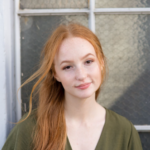Campaign for Choice: Inside the 1990 effort that’s protecting Nevada abortion access today
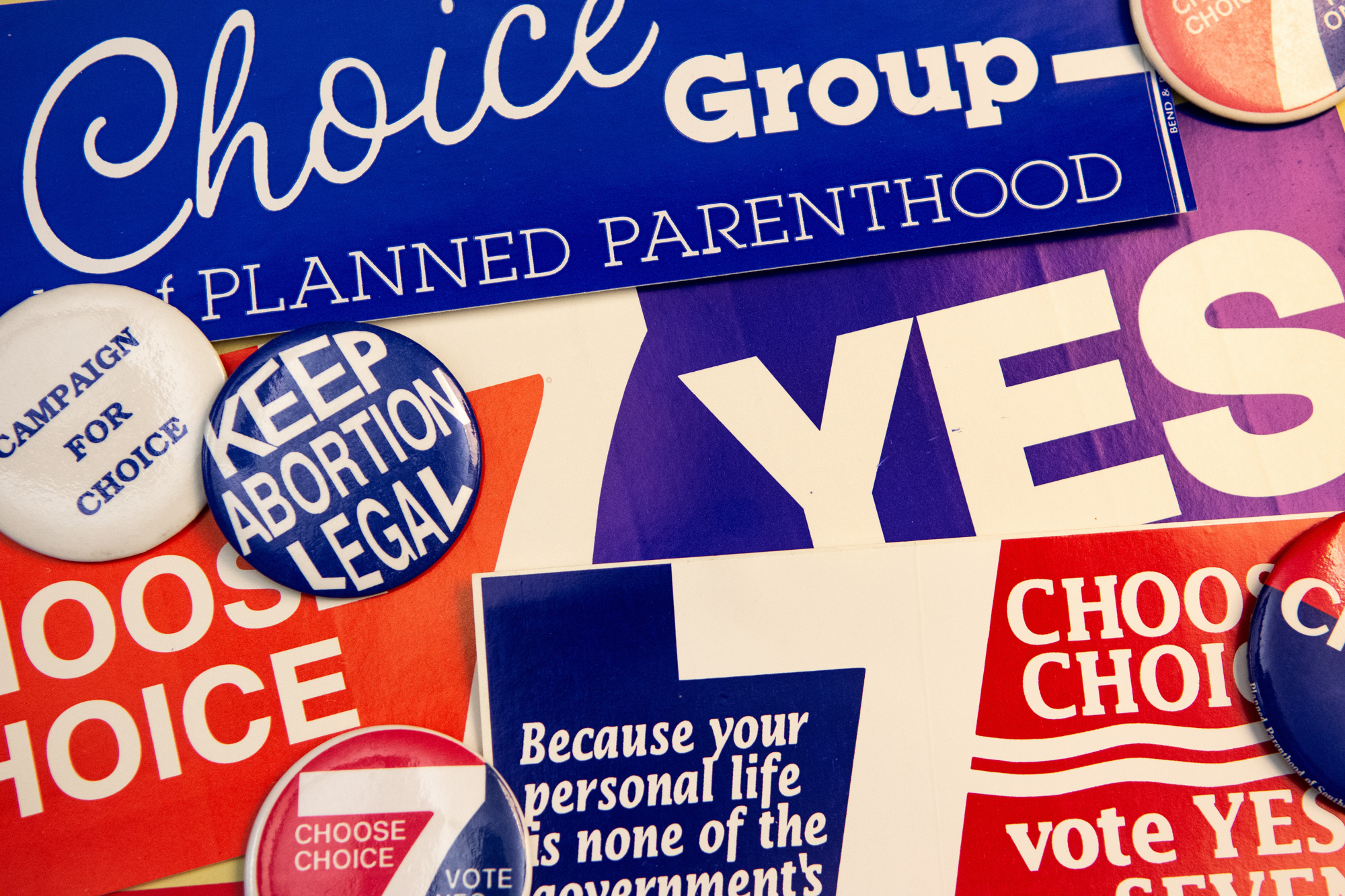
When the U.S. Supreme Court overturned Roe v. Wade last summer, it brought Candice Nichols back to a time when she watched close friends go through dangerous and illegal procedures in order to end unwanted pregnancies.
Nichols, now the director of programs at the LGBTQ Community Center of the Desert in Palm Springs, California, was a longtime activist for abortion rights in Las Vegas.
“It was traumatic,” Nichols said of the day in June 2022 when the Supreme Court decision overturning constitutional protections for abortion was released.
Without Roe, millions of women — particularly poor women and women of color — have lost access to legal abortions as roughly 20 states have passed restrictions on abortion procedures, including complete bans, since last year’s decision.
But in Nevada, legal abortion access hasn’t been in question since Roe was overturned.
It has remained secure through a law passed in 1973 and — crucially — reaffirmed by a 1990 referendum, meaning that lawmakers cannot change the law without another statewide vote. Prominent Republicans including Gov. Joe Lombardo have typically pointed to the referendum and its relative intractability when asked about their plans to change abortion law.
Behind this successful referendum, which locked down abortion rights in Nevada for more than 30 years, was an often underestimated — and, in the intervening years, largely overlooked — grassroots movement called Campaign for Choice.
This group of activists conducted a statewide effort, sending out hundreds of letters to recruit volunteers and donors small and large, that resulted in the passage of a referendum securing Nevadans’ abortion rights in an increasingly uncertain national landscape.
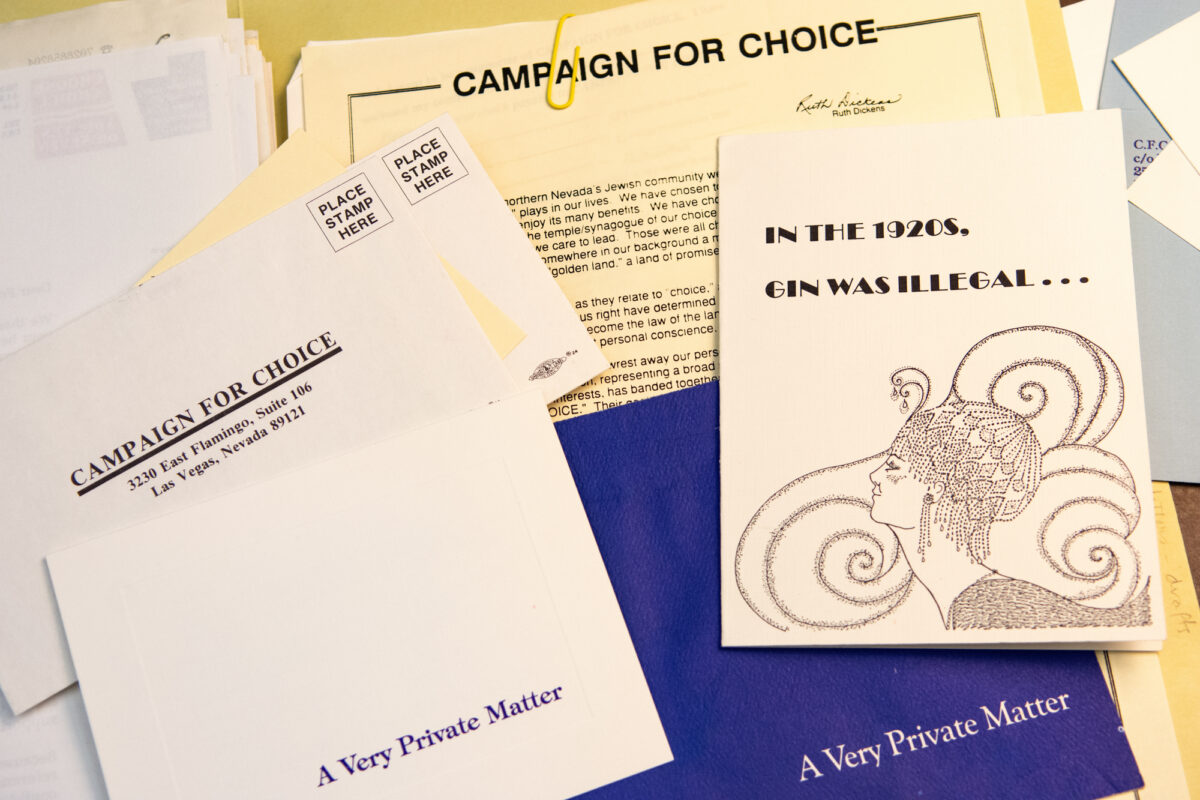
Campaign organizers submitted many of their original documents — meeting minutes, internal memos, consultant contracts, correspondence, and newspaper clippings — to UNR and UNLV archives for safekeeping gradually since 1990, but many still remain scattered across the state with the organizers.
Below is a retelling of their story, based on archival documents and interviews with the women who ensured abortion remains legal in Nevada today.
***
After Roe v. Wade was decided in 1973, Republican then-Attorney General Robert List declared the state’s anti-abortion law unconstitutional. Abortions became available within a month of the announcement.
Nevada lawmakers subsequently passed a law allowing abortion through 24 weeks of pregnancy and after 24 weeks in order to protect the health of the mother.
But abortion access in Nevada and across the nation was upended again after a 1989 U.S. Supreme Court case — Webster v. Reproductive Health Services — upheld a Missouri law prohibiting the use of public funds for abortions.
This decision and a wave of anti-abortion protests, sometimes turning violent, sparked fears that legal access to abortion may not last.
In the late 1980s, the Southern Nevada chapter of Operation Rescue — an anti-abortion group that organized protests across the country — began to stage blockades of abortion clinics in the Las Vegas area, sometimes involving members chaining themselves to furniture.
It was these blockades that got Nichols involved in what would eventually become Campaign for Choice.
“I called Planned Parenthood and said, ‘What's going on?’ and some people were meeting at a library and they were starting to form Pro-Choice Advocacy,” Nichols recalled. “And don't ask me how it happened. But within a couple of weeks, I was chairing that group.”
Soon, Nichols was waking up at 4 a.m. with other volunteers to get to abortion clinics where Operation Rescue was protesting and help women seeking services at the clinic get inside safely.
While Pro-Choice Advocacy was fighting to protect abortion access on the ground level, other activists feared that the Webster decision would pose a legal threat, empowering conservative Nevada lawmakers to push forward on legislative restrictions on abortion.
So another group was formed, starting in Northern Nevada and eventually melding with activists like Nichols in the south: Campaign for Choice.
Campaign for Choice leaders filed their articles of association with the state on Sept. 7, 1989 with a goal to “minimize government intrusion into private matters.” From the beginning, the campaign played to Nevada’s libertarian streak, emphasizing the right to privacy, instead the right to abortion explicitly.
Less than a month later, Campaign for Choice Executive Director Diana Wilson announced the campaign’s mission at an Oct. 2, 1989 press conference: Get a referendum on the ballot — and get it passed — affirming the state’s existing law by popular vote.
A campaign is born at fateful Planned Parenthood meetings
When the Webster decision came down, Laura FitzSimmons knew: “I have to get back to Nevada.”
FitzSimmons came to Nevada in 1981 to work as a law clerk at the Nevada Supreme Court, but was at Stanford University for the weekend with her family.
Although she had no experience with campaigns or organizing, she — like other women who would become involved in Campaign for Choice — felt an urge to take action to protect reproductive rights in Nevada, where the split Legislature at the time was dominated by men. The Senate was made up of 12 Republicans and eight Democrats, 16 men and four women; the Assembly had 12 Republicans and 30 Democrats, 30 men and 12 women.
FitzSimmons soon found herself in the weeks following the Webster decision at Planned Parenthood in Reno, along with a small group of women and men including Maggie Tracey (a state employee in the Rehabilitation Division who would become the president of the campaign), progressive philanthropist Maya Miller, Republican state Sen. Sue Wagner and Democratic Assemblywoman Jan Evans, who both represented Washoe County.
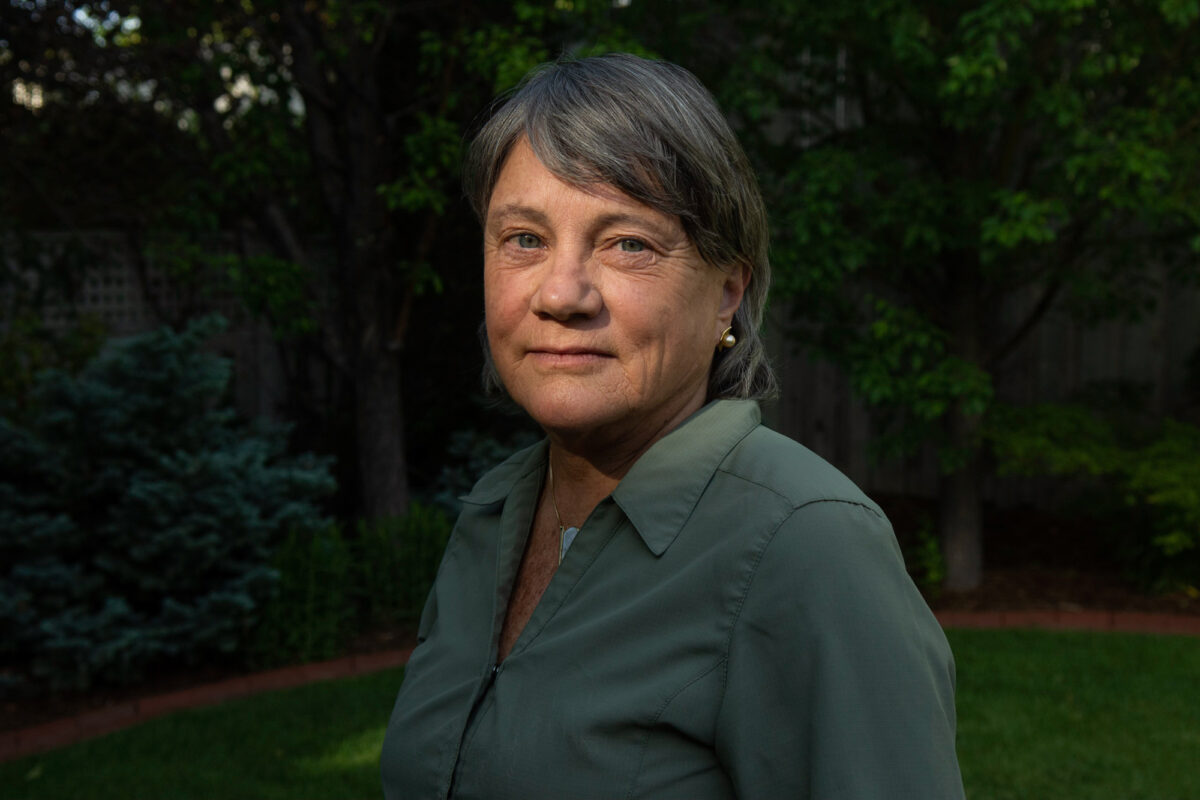
Tracey told The Nevada Independent that Wagner and Evans were essential in shaping the campaign’s legal direction. As legislators, she said, “[they] went to the Legislative Counsel Bureau and said, ‘These are some of the things we're looking at. What would be possible?’”
Wagner and Evans eventually recommended the group move forward with a referendum, feeling confident that voters, if not their fellow lawmakers, would favor abortion rights.
Use of a referendum was relatively rare (only four other referendum efforts had made it on a statewide ballot since 1908) and marked a high-stakes gambit. Win, and the state’s abortion law couldn’t be changed by state lawmakers, only by another vote of the people. Lose, and the law would be repealed — opening the door to legislative restrictions on abortion.
Still, organizers looked at polls conducted by the campaign, UNLV, and the Las Vegas Review-Journal and all found that a majority of Nevadans supported the right to legal abortion at the time of the campaign.
But to get the referendum on the ballot and passed by voters, the campaign needed money and leadership. It was here that Maya Miller — a longtime progressive activist who died in 2006 — played her most essential role.
According to FitzSimmons, Miller donated “a shitload of money” at the start of the campaign — between $100,000 and $150,000 in her estimate, which would be about $300,000 today.
And it was Miller who convinced Tracey to step up as a director of the campaign.
“She looked at me, because she was really good at that, and she said, ‘So what are you going to do? Is this important to you or is it not important to you?’” Tracey remembered.
‘Unique’ coalition campaigns in a unique state
Meetings continued throughout the summer and fall and connections were forged between northern and southern activists, religious leaders and political experts. By the time of the October press conference, a coalition had been formed that would reach voters in all corners of Nevada.
Nichols described the group’s supporters — men, women, nuclear families, LGBTQ+ people, Jewish people, young people and old people — as “eclectic,” and she attributed some of the infighting that at times made progress difficult for the campaign to the vast diversity of opinions represented.
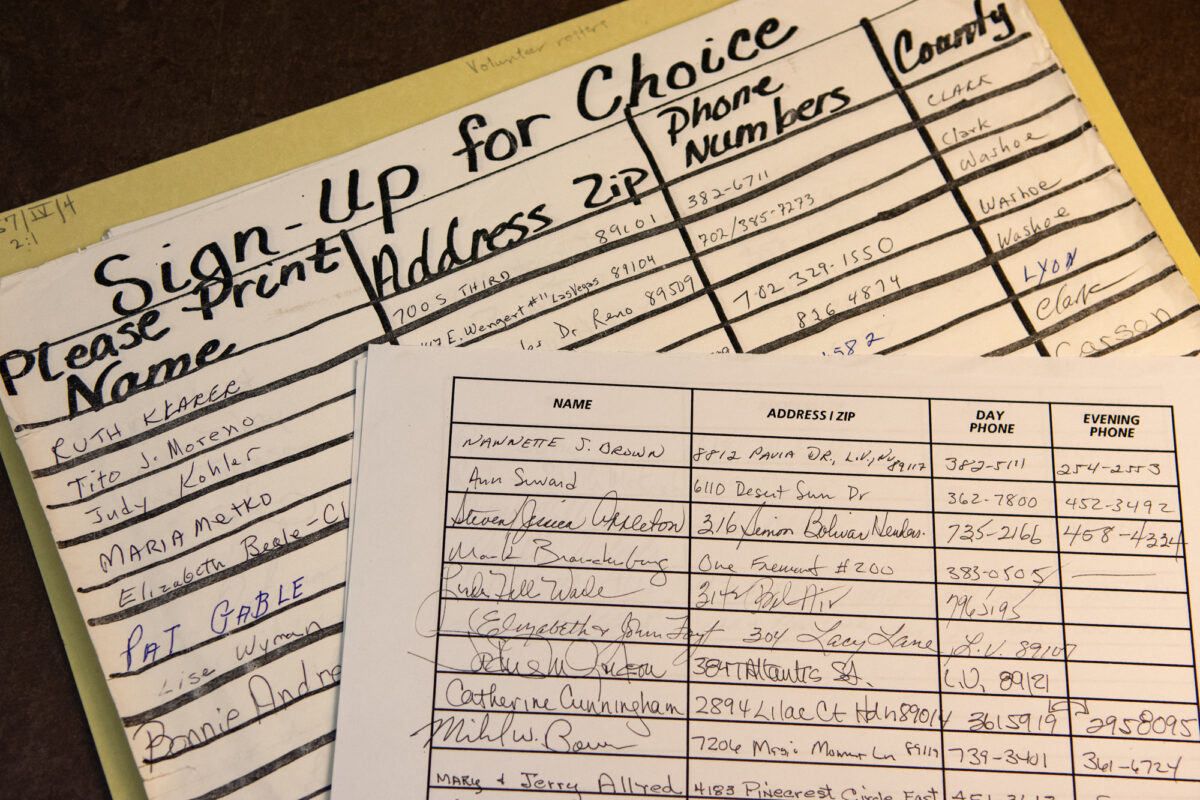
But ultimately, the campaign leaders saw this diversity as a strength and a necessity for passing a progressive referendum in what was then a solidly red state, voting for every Republican presidential candidate since Richard Nixon in 1968.
Various community leaders — such as Chris Giunchigliani, who was a leader of a teachers union in Nevada at the time and later a state lawmaker and county commissioner — were essential to securing financial support, petition signatures and volunteers to the movement.
Grassroots support was especially important as organizers recalled that many politicians and major political donors, such as casino owners, only supported the campaign quietly, if at all.
Nevada’s Democratic governor at the time, Bob Miller, did not align himself with Campaign for Choice (though he said in later campaigns that he had signed the petition, a claim that Campaign for Choice leaders dispute).
But he still wanted to be kept apprised of the hottest political battle of the year, so Tracey said she would meet regularly with his chief of staff — “entering through the back door” in order to prevent any appearance of support on Miller’s behalf.
Opposition, a force from all directions
Anti-abortion groups worked against the campaign from the beginning. The Eagle Forum, Nevada Right to Life and others came together to form Choose Life Campaign ‘90, holding an annual vigil on the anniversary of Roe and providing anti-abortion literature to voters.
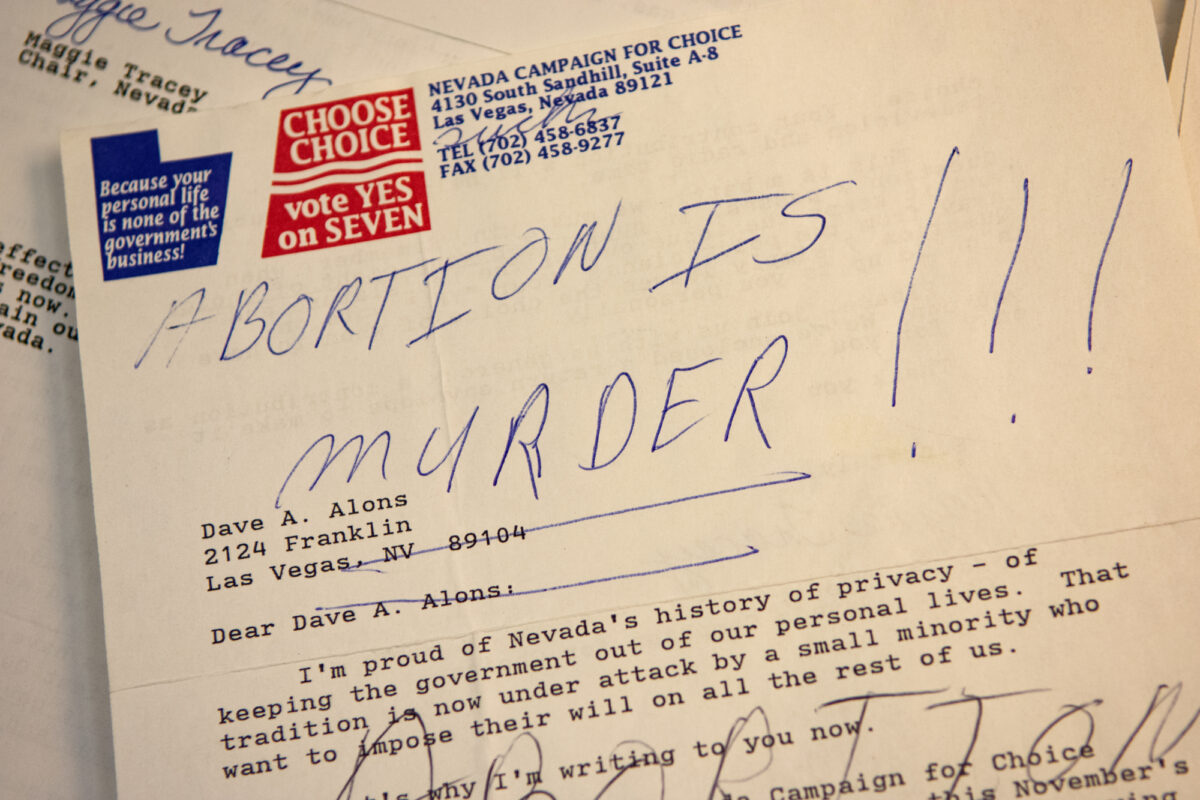
As Campaign for Choice moved into its second phase of convincing citizens to vote yes on the referendum now called Question 7, anti-abortion groups doubled down. Though they spent significantly less than their pro-abortion rights counterparts (less than $20,000 compared to Campaign for Choice’s $191,800 by August 1990), Choose Life Campaign successfully leveraged the emotion and religious facets of reproductive health issues to launch an effective media blitz.
The Choose Life Campaign was led by Janine Hansen, who still runs Nevada’s chapter of the Eagle Forum. Hansen told The Nevada Independent that her focus during the campaign was “finding a more compassionate answer to our problems than killing babies.”
She also said that several women who previously had or considered having abortions offered their support for the Choose Life Campaign, saying the decision took a physical and emotional toll. Research conducted in 2022 shows that maternal mortality rates are 62 percent higher in states with stringent abortion restrictions.
Though the Choose Life Campaign ran some ads, it got a major boost from negative press surrounding the referendum effort. According to Nichols, the vast majority of reporting on the campaign was not about the referendum itself, but about the infighting among abortion rights activists and various missteps.
Just days before the election, a flashpoint came after the Las Vegas Review-Journal — the state’s largest newspaper — published a column by its editor at the time, Sherman R. Frederick, about an abortion gone wrong, leaving a baby with the pseudonym “Adam” who was born alive to die several hours later.
A few days later, the Review-Journal published another article about the “baby Adam incident,” saying that routine tests by the hospital found that the fetus was not viable before stopping treatment in the neonatal care unit.
In an interview with The Nevada Independent, Frederick called the tests done by the hospital “pure conjecture” and “horse shit.” He stood by his original column, holding that the baby was viable when born.
“If it wasn’t viable, why take it to neonatal care?” he asked.
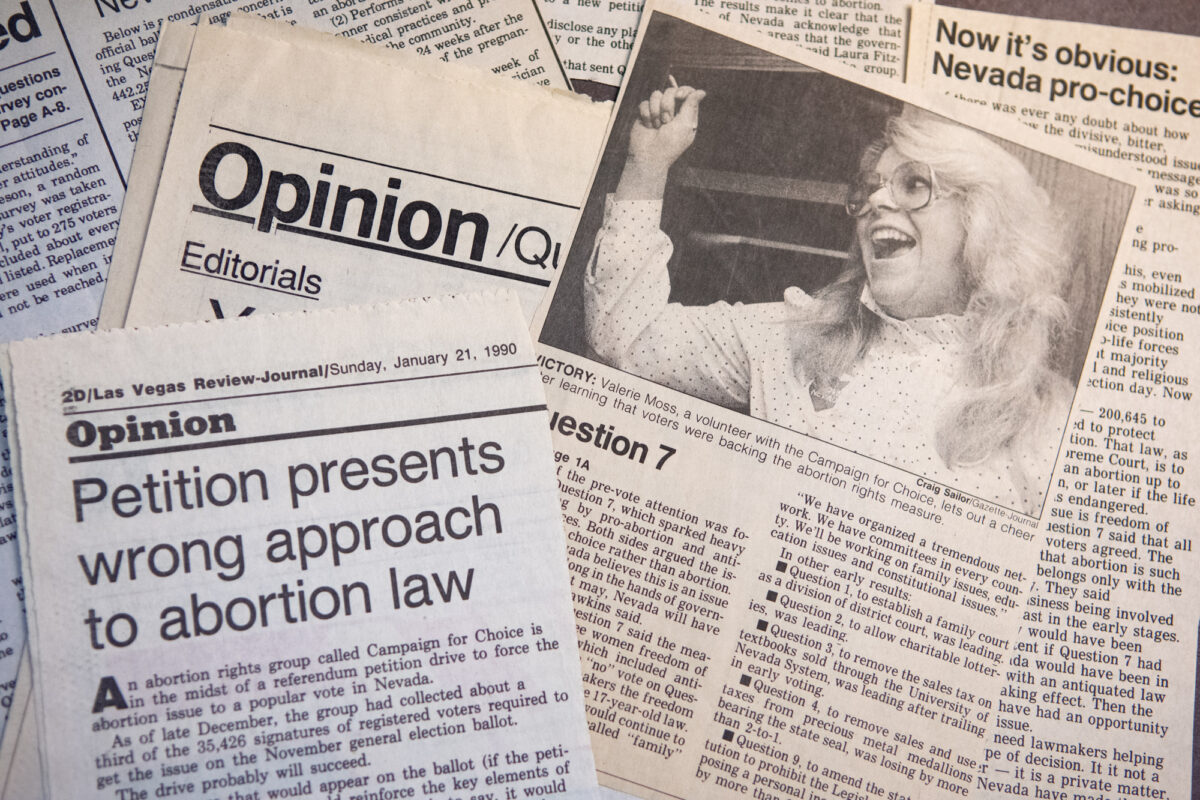
The Review-Journal’s editorial board also published several columns urging voters not to support Campaign for Choice, saying it would allow “virtually unrestricted abortion” through the full term of pregnancy and calling the right to life “basic, fundamental, and ironclad.”
Though Frederick said he could not recall the exact details of the newspaper’s coverage of the campaign 30 years later, he said that “if we did oppose the campaign, it wasn’t about right and wrong. It was about the equal competing interests of the mother and baby.”
Campaign for Choice organizers became increasingly concerned about the press’s power — FitzSimmons recalled telling a political consultant, “If I had all the money in the world, I’d buy the Catholic Church.”
“No, you’d buy the Review-Journal,” she recalled him responding. “They’re the enemy.”
Tracey said that additional opposition came from other abortion rights activists, such as the National Organization for Women, because of the campaign’s choice to focus its messaging on privacy rather than abortion explicitly.
But the campaign decided based on focus groups it facilitated in early stages that “if you frame a campaign around ‘Do you want the government in your bedroom?,’ that will carry with us libertarian values of Nevada, but if you start using it to promote abortion, we're not going to win,” Tracey explained.
Reaching the finish line: Election Day
As the clock ticked toward Election Day, Campaign for Choice stretched the limits of its wallet and its volunteer force.
Only a few organizers were paid. Many, like FitzSimmons, had taken a year off of work despite their families’ already tight budgets. Tracey, whose boss supported abortion rights and backed the campaign, fielded campaign calls at her job and worked long hours to keep up with the demands of both.
The campaign had tried to bring in financial support from national pro-abortion groups, such as Planned Parenthood and NARAL Pro-Choice America, but they had focused their resources on other states where referenda were on the ballot to attempt to ban abortion. It wasn’t until “the eleventh hour,” as Nichols put it, that the two national groups came through with more than $30,000 to pay for ads in the final push before the election.
But many organizers were inspired by the campaign's small individual donors — a $5 check from a retired nurse who cared for women after they had illegal abortions pre-Roe; a tin can of small bills saved by an elderly woman who had nearly died because of an illegal abortion.
In the end, the campaign cost $959,628, the equivalent of more than $2.2 million today.
On the eve of the election, Campaign for Choice leaders were uncertain about what would happen. Tracey and FitzSimmons both remembered driving to FitzSimmons’ Las Vegas house after the last night of frantic work on Nov. 5 and asking each other, “What if we ruined everything?”
On Nov. 6, leaders on both sides of the measure, politicians, journalists and voters held their breath. Though the referendum was an afterthought in national coverage of reproductive rights, it represented a year’s worth of pent-up political strife in Nevada.
The next morning, front pages of newspapers across the state told Nevadans that the referendum had passed overwhelmingly — by 62 percent.
Nevada’s abortion support persists as national climate changes
Since Nov. 6, 1990, Nevada’s abortion law has remained the same, protected by the referendum that Campaign for Choice fought to pass.
The women who led the campaign thought at the time that reproductive rights, which had not been guaranteed for past generations, would be a foregone conclusion for future ones.
Tracey is now a year younger than Maya Miller was when Miller encouraged Tracey to lead Campaign for Choice.
“As a young woman, I thought, ‘I hope that we're still not working on this when I’m Maya’s age, right?’ And sure enough, here we are,” Tracey said.
The Supreme Court’s decision to overturn Roe has put the future of abortion access into question across the country, but anti-abortion advocates in Nevada are not optimistic that abortion access will be restricted anytime soon. Hansen, the leader of the opposition to Campaign for Choice, called the passage of the 1990 referendum “devastating” for the anti-abortion cause.
She explained that it is “far more difficult and expensive” to run a campaign for a referendum in 2023 than it was in 1990.
“You couldn’t do it with just volunteers. You would have to hire people and that makes the campaign so much more expensive,” she said.
For now, she plans to continue educational efforts and advocating for laws that would place regulations on abortion in Nevada — such as a parental consent initiative, which failed to get on the ballot in 2022, but would have required legal guardians of minors seeking abortions to be notified 48 hours before the procedure.
“Just like it took 50 years for Roe v. Wade to be overturned, these things take time,” Hansen said of political attitudes and policies on abortion.
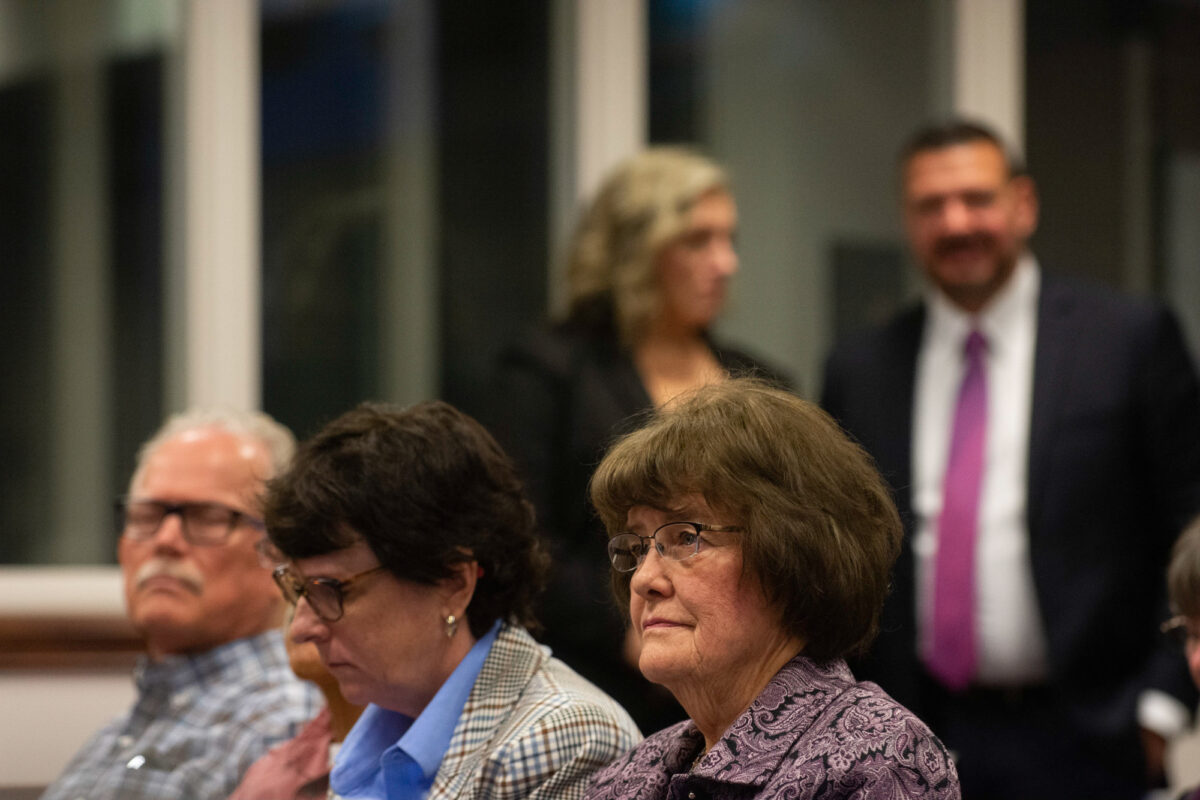
Even though the legality of abortion is protected in Nevada, many women in rural areas of the state cannot easily access abortions, unless they can act early enough in pregnancy to terminate with medication.
Surgical abortion is much harder to access, with five surgical abortion providers in Las Vegas and two in Reno. For those that do live close to a clinic, the procedures are expensive — ranging from a few hundred to a few thousand dollars.
FitzSimmons and Tracey, who have been “absolute best friends” since the campaign, feel confident that Nevadans would not support changing abortion protections by ballot referendum. Sixty-two percent of Nevadans today support strengthening abortion access by enshrining it in the Nevada Constitution, according to a poll by The Nevada Independent and Noble Predictive.
That’s the same percentage of citizens that voted in favor of the 1990 referendum.
FitzSimmons and Tracey’s concern is more about what happens outside the state. In 2023, as in 1989 after the Webster decision, they fear that the Supreme Court will continue to chip away at reproductive rights.
“The fact that you can pack a court and destroy half a century of legal precedent should terrify everyone,” FitzSimmons said.
This article was updated at 10:00am on Monday, August 14 to reflect that Laura FitzSimmons was visiting California when the Webster decision came down, not living there.
